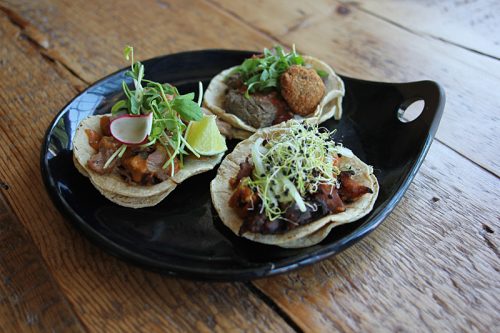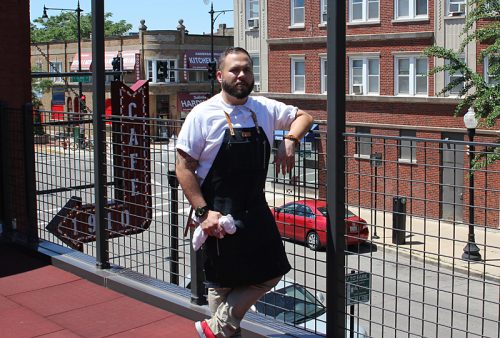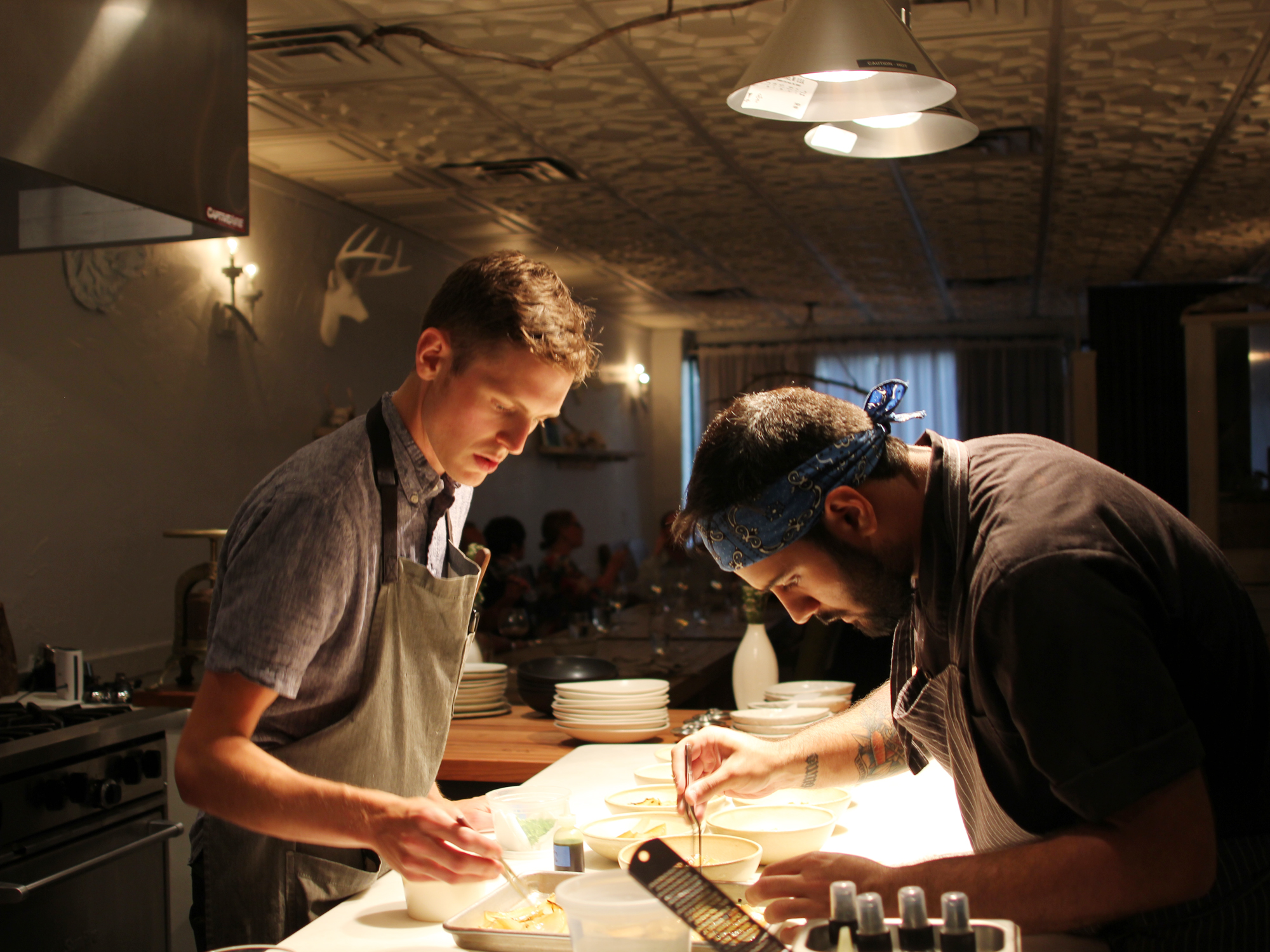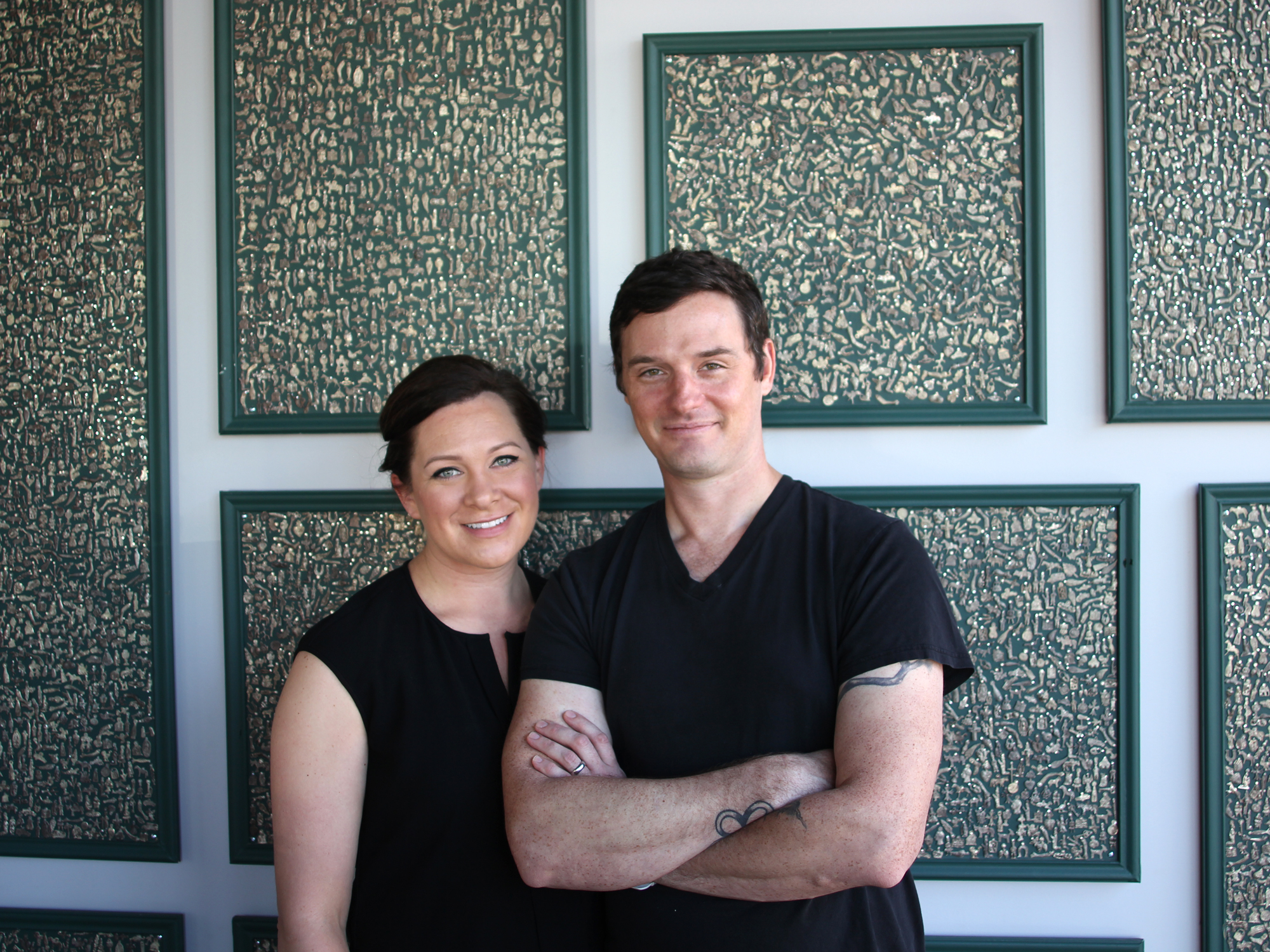WHO REALLY KNOWS WHAT HAPPENED at Cantina 1910? Not nearly as many people as are speculating on the causes of the ambitious Andersonville Mexican restaurant’s collapse this weekend, when it unceremoniously shut down after service Sunday via email, leaving staffers to go commiserate at the Hopleaf. Or at least the people who know and the people who are willing to tell you all about it are two different sets of people.
I’m no different—I covered it way before opening for the Reader, when it was going to be called Cantina de la Granja and was a modern Mexican restaurant under D.C. chef Diana Davila, with a rooftop farm on the premises of the expensively rehabbed building; I discussed it with others on Fooditor Radio when owners Mark Robertson and Mike Sullivan (Crew Bar & Grill, SoFo Tap) broke with Davila shortly after it opened (I considered it one of the best openings of last year); and most recently I published (and shot the photos for) Anne Spiselman’s piece on its new, now final, chef, Scott Shulman. But I haven’t talked to anybody from inside the place since this happened, either.
 Grant Kessler
Grant Kessler Scallop ceviche, by Scott Shulman
So why write about it? Because this was a big opening—I named it one of my favorites for last year in that Fooditor Radio episode—and, while big openings have been common this year, big closings haven’t been. I’m not the only one who thinks there’s hints of a bubble aspect to our restaurant scene, even as big new places really do pack the crowds in. As hot as even the West Loop is, we’re going to see some high profile closings there when restaurants from the early 2010s boom hit the point in their leases when they either have to pay more or get out. Riskier ventures—like really big Mexican restaurants in residential neighborhoods—will be, well, even riskier.
So trying to understand what happened in this case is helpful for understanding our restaurant scene as a whole, and not being surprised by change. Here are the key theories on what closed Cantina 1910, and my thoughts on them and their probability, or speciousness, as the case may be.
Killed by the living wage
The fiscal environment in Chicago was what Cantina 1910’s owners cited in their announcement Sunday night:
Unfortunately the rapidly changing labor market for the hospitality industry has resulted in immediate, substantial increases in payroll expenses that we could not absorb through price increases. In the last two years, we have seen a 27% increase in the base minimum wage, a 60% increase in kitchen wages, and a national shortage of skilled culinary workers. As we look down the road, we are facing a December 1 change in federal labor regulations that will nearly double required salaries for managers to qualify as exempt, a 2017 mandatory sick leave requirement and another minimum wage increase. Coupled with increasing Chicago and Cook County taxes and fees that disproportionately impact commercial properties and businesses, we are operating in an environment in which we do not see a path forward. We are unable
to further raise prices in this competitive restaurant market in order to sustain the labor costs necessary to operate Cantina 1910.
People who regard kitchen wages as a social justice issue were quick to respond to this on social media, insisting it couldn’t be true—instead blaming greedy owners, or a place that wasn’t run well in the first place.

A pork dish of Diana Davila’s
But realistically, all of these things can be true to some extent. It’s just a fact that kitchen workers are underpaid (and moneyed people who dine out benefit from the fact). I’d like to see that situation change, out of decency.
At the same time, it’s unrealistic to think that restaurant economics can change without affecting any business adversely. Some places running on the edge are going to be tipped over it, and restaurants are already changing to deal with this issue. Any time you walk into a fast casual restaurant where you place your order at a cash register and pick up your food when a number is called, you’re dining somewhere that has figured out how to reduce the impact of increased server wages by eliminating bodies and making you serve yourself. They’ve also figured out how not to make you think about it—unlike Cantina 1910, where service problems were obvious enough that they rated two paragraphs in Phil Vettel’s recent, generally favorable review.
To the claim that Andersonville won’t support fine dining, I have to return a verdict of “Not Proven.” There’s just not enough evidence either way.
The irony is that many people were dismissing Cantina 1910’s claims on the same day that a story about the adverse effect taxes can have on entertainment businesses was all over local media—and nobody was disputing that Cook County denying rock and roll venues an exemption from amusement taxes enjoyed by fine arts venues could threaten the existence of those businesses. I believe those music venues, and I believe Cantina 1910 when they looked at their trendlines and didn’t see how they could make it based on a realistic assessment of their 10-month-old restaurant.
Andersonville, this is why we can’t have nice things
One storyline about Cantina 1910 from the beginning has been that Andersonville is inhospitable to high quality restaurants. That was the argument made by Mike Sula in his review of the original, Davila-era version of Cantina 1910. Influenced by the earlier demise of an ambitious place called Premise in Andersonville, among others, Sula cited some hostile Yelp reviews as evidence that Andersonville was strictly hicks from the sticks: “I was disappointed, but not really surprised to see folks claiming to have been eagerly awaiting the opening, and then offering the typical one-star complaints about high prices, small portions, pretentious dishes, charges for chips and salsa, the presence of headcheese, the absence of rice and beans, and goddamn it to hell where is the margarita list?”
But honestly, at the same time there were also Yelp reviews that hailed Cantina 1910’s virtues from the get-go (look at them sorted by date here). To the claim that Andersonville won’t support fine dining, I have to return a verdict of “Not Proven,” for there’s just not enough evidence either way—the most ambitious new openings have been so concentrated in just two areas, the West Loop and Logan Square, that the sample size in a place like Andersonville is, basically, one. Like a lot of neighborhoods, it will be a neighborhood that won’t support fine dining until it does, and then whatever place finds the magic formula will soon have lots of company around it.

Shulman’s taco assortment
They took too long to hire a new chef
Diana Davila left on December 16, 2015; pastry chef Andrew Pingul took on the job of head chef while they hunted for a replacement. The official announcement that Scott Shulman would be the new chef was dated March 15, 2016—almost exactly three months after Davila’s departure. More than that, Shulman and his food remained largely unknown for months more—the Fooditor piece with a few dish photos was 2-1/2 months after that. Vettel’s review was another month after that.
All of that was a long time to leave an expensive restaurant in creative limbo. Compare it to how Boka Group reacted when Ryan Poli left Perennial in 2011—they immediately announced that they had, as Ari Bendersky put it at Eater, “aligned themselves with a celebrity chef who will partner with them and take the restaurant to the next level.” I remember expressing skepticism about this at the time, but sure enough exactly one week later they announced that a hugely respected chef, Paul Virant, would replace him at the reconcepted Perennial Virant.

Scott Shulman on the rooftop
They didn’t take long enough to hire a new chef
I met Scott Shulman and liked his food; he’s a good guy and hopefully we’ll see what he can do in another setting soon.
But he still may have been the wrong choice for this restaurant. Cantina 1910 came with a whole story about the backgrounds of the people involved, as I know because I wrote it—Mark Robertson grew up on a farm, and said “We’re looking to establish a superstrong relationship with these farmers, to go beyond just buying from them, we’re looking to understand what they’re doing and work with them to do some custom things for us.” Diana Davila grew up in a Mexican-American family: “I have a grandmother and an uncle that passed away [who] I learned a lot about food from. So a lot of the dishes are renditions of what they used to make, or what they liked to eat.”
A new chef walking into that restaurant after Davila was something like Mike Sheerin walking into a restaurant (Embeya) that bore the childhood nickname of the previous chef. You just don’t have the roots that were an essential part of the restaurant’s story for diners. I’m not sure there was ever any way to save a restaurant so identified with the individuals involved, but at least another Mexican chef with his or her own personal history with the food might have been a start.
Restaurateurs or farmers?
Was there too much going on at Cantina 1910? They had a bar, and a restaurant, and a cafe, and a rooftop garden, and plans to preserve lots of things from the farm. Yet when I was shooting there, the farm was nowhere to be seen—it turned out the rooftop had been leaking, and it needed to be resealed before they could put the container garden back. The sad irony was that for a place with such farm-to-table ambitions, they never did grow much, if anything, for use in the restaurant—in the 10 months they existed, they were mostly between chefs (or rooftops) whenever they needed to be planting.
Your modern Mexican superstore
Remember the scene in The Shining where Jack Nicholson strides into the dining room full of chic ghosts from the 1920s, and almost immediately Mr. Grady spills a drink on him and diverts him into the bathroom? That’s kind of how I felt the two times early on when I went to Cantina 1910—I had a vague sense that there was all this restaurant past the first room with the bar, no doubt full of chic people having a great time. Yet I could never seem to get there. (Happily, the similarities to Jack Torrence ended there.)

Andrew Pingul’s desserts
The point is, Cantina 1910 was huge. Easily the biggest restaurant in Andersonville, at 6,700 square feet and 180 seats (more when the patio was open). By comparison, Rick Bayless’s new Leña Brava has just 75 seats, despite also having… Rick Bayless. And another problem was, they seem to have wanted everything Rick Bayless has, including the personal garden and the relations with farmers, from the day they opened. They might have been better off growing in stages.
But they couldn’t. One source claiming to be the realtor for the space on Facebook cited a figure of $25,000 a month, as the rent for the entire property. That’s a big monthly nut to cover, especially in a non-destination neighborhood.
In the end, the size and expense of the space is a driver behind all the other explanations. It was reportedly too big for Diana Davila to manage early on (at least that’s one side of the story). It was too big for a neighborhood whose restaurant scene is still just beginning in many ways. It was too big to sit so long without a clear direction and story to tell diners. It was too big to sustain the level of staff needed to deliver the expected level of service, and pay them what they’d have to be paid. It was too big to run as a restaurant, a bar, a cafe, and a farm all at once. In the end, sadly, Cantina 1910 was just too big not to fail.
Michael Gebert is the editor of Fooditor.
Latest
Join the Discussion
After you comment, click Post. If you're not already logged in you will be asked to log in or register with Disqus.








Cantina 1910, oh yeah, blame everything but the over grandiosity of your building in the middle of neighborhood, the more photos of your food items appearing made them look unappealing and gastronomically painful; continuos managment attrition
– and a roof top farm in a city with only three months of nice weather?? as a business…yeah blame minimum wage..seems you thought you were spending pesos.
Your problems were that you were the direct antithesis to Rick Bayless.